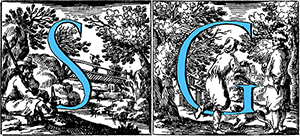
CANAL Giovanni Antonio “Canaletto”
(Venice 1697 – 1768)
Born in Venice on 17 October 1697 by Bernardo Cesare Canal and Artemisia Barbieri. The nickname “Canaletto” was attributed to him to distinguish him from the father with whom he collaborated and who was a painter of theatrical sets, or perhaps because of his short stature. Between 1718 and 1720 he moved to Rome with his father and brother Cristoforo to paint the scenes of two plays by Alessandro Scarlatti.
The trip to Rome was fundamental to Antonio’s contacts with painters of landscape painting active in that city, including Pieter Van Laer, Michelangelo Cerquozzi, Giovanni Ghisolfi and Gaspar Van Wittel. Back in Venice, he made contacts with Venetian painter artists such as Luca Carlevarijs and Marco Ricci and began to devote himself to painting views of the lagoon city. Thanks to his remarkable ability and his technique, within a few years he made great progress, so much so that in a short time he became one of the most successful painters in Venice. rked for the future English consul and patron Joseph Smith performing works that were to embellish the collections of the rich and refined English collectors. With his works, Canaletto raised urban landscape to a current of artistic taste representative of the European Enlightenment as well as history and figure painting, which until then had dominated the art scene. Around 1740 he began to carve a series of valuable etchings, probably commissioned and financed by the Smith consul, published for the first time in 1744.
From 1746 he moved to England where he stayed, especially in London until 1756. To this period belong the views of the Thames and the English countryside painted for the local high aristocracy. Returning to Venice, he still painted some masterpieces but progressively isolated himself from the artistic and the worldly environment, until his death in his home in San Lio in April 1768.



